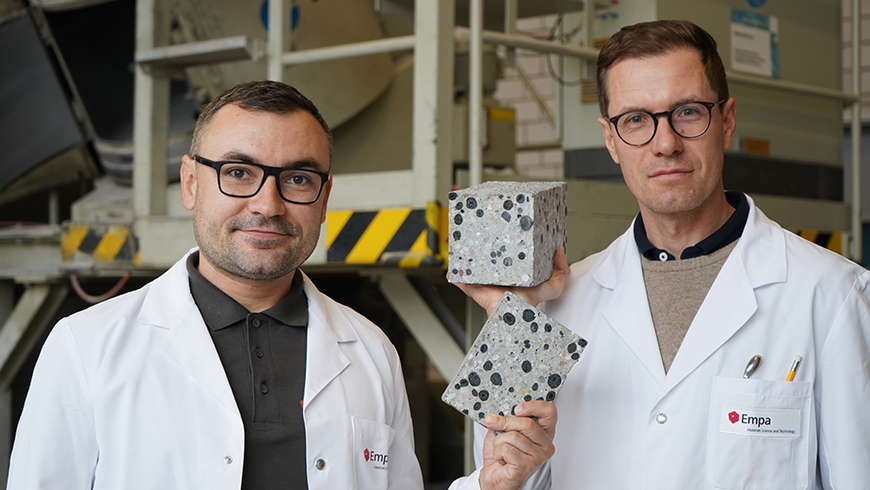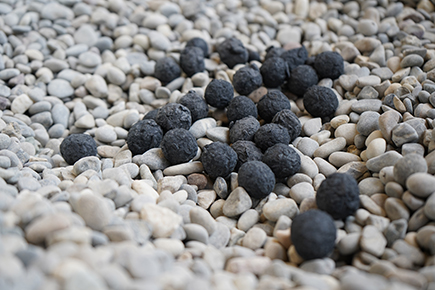Carbon in concrete
Building on CO2

Difficulties due to porosity

Biochar is produced by a pyrolytic carbonization process of biomass in the absence of oxygen and consists to a high extent of pure carbon – the carbon that the plants have extracted from the atmosphere in the form of CO2 as they grow. While CO2 is emitted when plants are burned, it remains bound in the biochar over the long term. The first concrete products with integrated biochar are already on the market. However, biochar is often introduced into the concrete untreated, which can lead to difficulties. "Biochar is very porous and therefore not only absorbs a lot of water, but also expensive admixtures used in concrete production," explains Empa researcher Mateusz Wyrzykowski. "Moreover, it is difficult to handle and not completely harmless either." The fine coal dust is problematic for the respiratory tract and carries a certain risk of explosion.
For these reasons, the researchers propose in a paper that has just published in the Journal of Cleaner Production processing the biochar into pellets. "Such lightweight aggregates already exist from other materials such as expanded clay or fly ash. The knowhow in handling these materials is available in industry, and this increases the chances that the concept will be put into practice," says Wyrzykowski.
Net zero at 20 percent share
Carbon from the atmosphere
Prof. Dr. Pietro Lura
Concrete & Asphalt Lab
Phone +41 58 765 4135
Dr. Mateusz Wyrzykowski
Concrete & Asphalt Lab
Phone +41 58 765 4541
M. Wyrzykowski, N. Toropovs, F. Winnefeld, P. Lura. Cold-bonded biochar-rich lightweight aggregates for net-zero concrete. Journal of Cleaner Production (2023). doi: 10.1016/j.jclepro.2023.140008
-
Share






